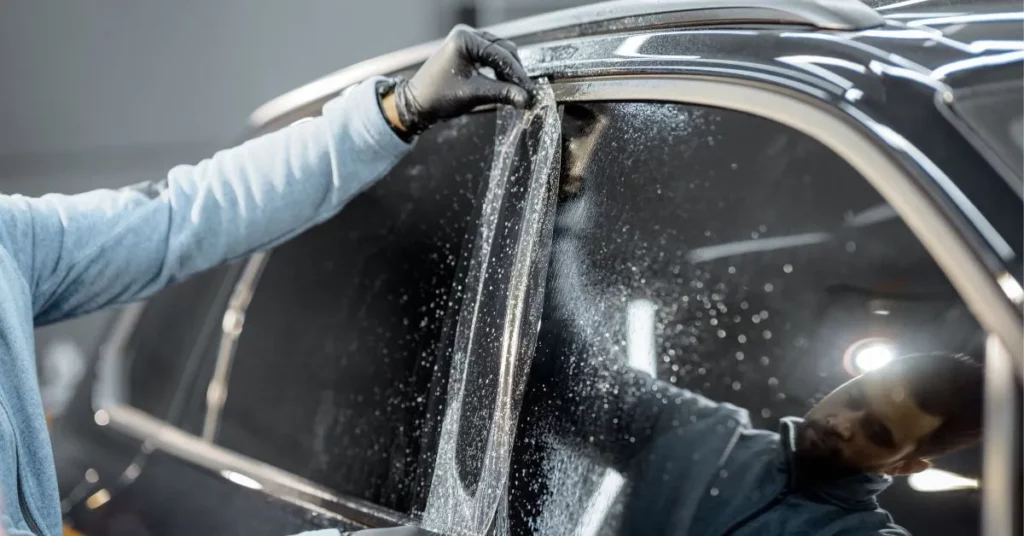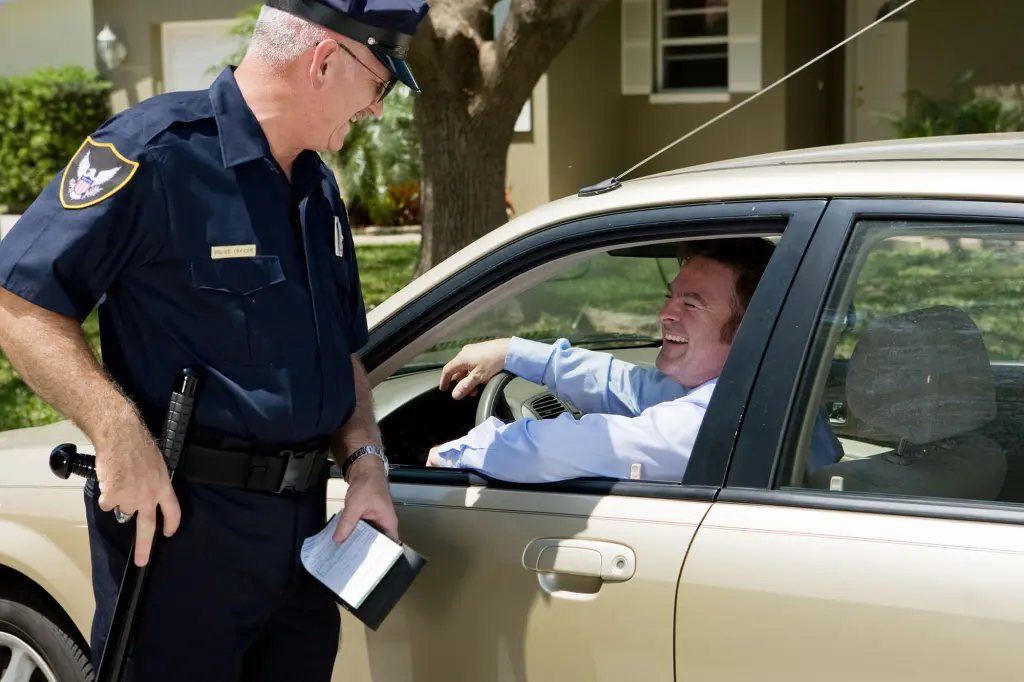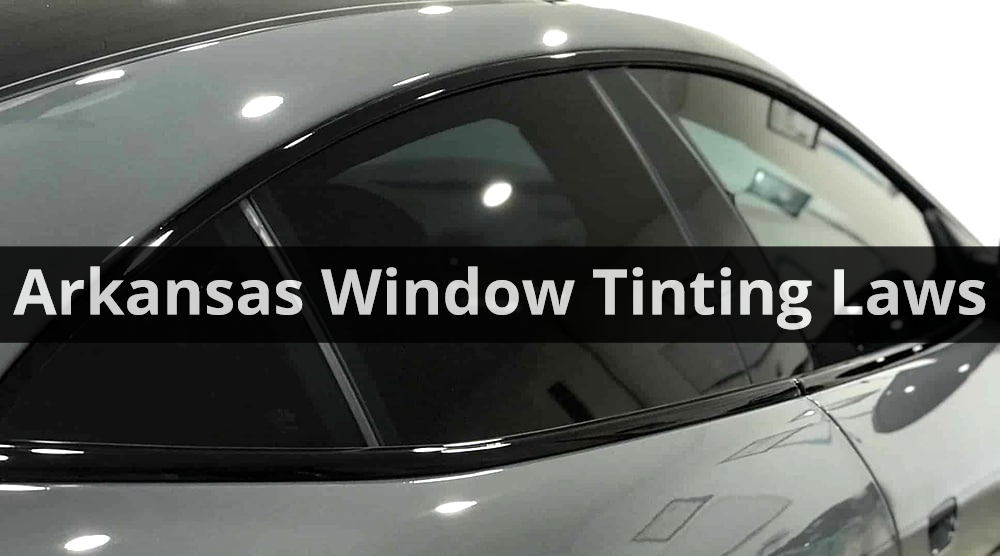Darkest legal tint for Sedans in Arkansas
- Windshield: Non-reflective tint allowed on the top 5 inches.
- Front Side windows: Must allow more than 25% of light in.
- Back Side windows: Must allow more than 10% of light in.
- Rear window: Must allow more than 10% of light in.
Darkest legal tint for SUV and Vans in Arkansas
- Windshield: Non-reflective tint allowed on the top 5 inches.
- Front Side windows: Must allow more than 25% of light in.
- Back Side windows: Must allow more than 10% of light in.
- Rear window: Must allow more than 10% of light in.
Curious about Arkansas window tinting laws? You’re in the right place! We’ll give you the lowdown in a nutshell.
In a nutshell: Arkansas regulates window tinting to ensure road safety. The law permits a certain level of tint darkness for different windows on your vehicle, with exceptions for medical conditions. You can use window tinting for privacy and sun protection, but it must adhere to the state’s guidelines.
Arkansas Window Tinting Laws

If you’re cruising through the Natural State, you might want to know a thing or two about Arkansas window tinting laws. We’re here to shed some light on this shady subject.
Let’s Talk Percentages:
First off, Arkansas doesn’t shy away from regulating window tint darkness to keep its roads safe. For sedans and other passenger vehicles, the darkest legal tint percentage is:
- Front Side Windows: These are the windows next to the driver and front passenger. You’re allowed a tint that lets at least 25% of visible light through. Essentially, it’s a quarter of the sun’s embrace.
- Back Side Windows: Now, if we’re talking about the rear passenger windows, you can go a bit darker. Arkansas permits a tint that allows just 10% of visible light. It’s your backstage pass to a cooler, shadier ride.
- Windshield: Your windshield, however, should be pretty clear. Arkansas allows non-reflective tint on the top strip of your windshield, but it shouldn’t extend more than 5 inches down from the top. Below that, your windshield must let in at least 25% of visible light.
Medical Exceptions:
But, there’s a heartwarming exception to these rules. If you have a medical condition that requires extra protection from the sun’s harsh rays, you can apply for a medical exemption. Your doctor’s note might grant you a bit more tint darkness, but you’ll need to keep that paperwork handy.
Don’t Get Too Reflective:
Arkansas also frowns upon highly reflective window tint. You want to avoid turning your car into a rolling mirror. If your tint reflects too much light, you might find yourself facing a ticket.
Remember, these laws are here to keep everyone safe on the road. So, while you can embrace some privacy and sun protection with window tinting, always make sure you’re within Arkansas’ guidelines.
Medical Exemptions for Arkansas Tint Laws

So, you want to know about those golden tickets – the medical exemptions for Arkansas window tint rules. Well, stick around, because we’re diving into this window-tinting rabbit hole.
Why Medical Exemptions Exist:
Arkansas, like many states, understands that not all window tinting is about privacy or style. Sometimes, it’s about health. Imagine having a medical condition that makes you ultra-sensitive to sunlight. In such cases, the sun’s glare isn’t just an annoyance; it can be a genuine health risk.
Getting that Exemption:
To qualify for a medical exemption in Arkansas, you’ll need to get a doctor’s note. Your friendly physician should specify the medical condition that necessitates darker window tinting. This isn’t a casual request; it’s a legit medical prescription for shade.
What It Buys You:
Now, here’s the scoop on what this exemption gets you. With that doctor’s note in hand, you can have window tinting on your car that’s darker than what’s typically allowed by state law. The exact darkness may vary depending on your specific medical needs, but it’s usually a bit darker than the standard tint.
Carry the Proof:
One more thing, don’t forget to carry that golden ticket – your doctor’s note – whenever you’re on the road. If you get pulled over for a tint check, you’ll want to show it to law enforcement. Having it handy can save you from a potential ticket or hassle.
Important Note:
Remember, medical exemptions aren’t a free pass to black out your windows entirely. It’s about balancing your medical needs with road safety. So, while you can enjoy some extra shade, don’t go overboard.
Now you’re in the know about medical exemptions for Arkansas window tint rules. They’re there to help folks who need a little extra protection from the sun, ensuring everyone can drive safely.
Window Film Certificates and Stickers in Arkansas
Alright, buckle up, because we’re talking about those little certificates and stickers that come with your window tint in Arkansas. They might seem like small pieces of paper and decals, but they pack a punch when it comes to staying on the right side of the law.
Proof of Compliance:
In the land of natural beauty and southern hospitality, Arkansas has some pretty clear rules about window tinting. And to prove that your car’s tinting is A-OK, you need a window film certificate. This certificate is like your car’s report card, showing that your tint complies with the state’s regulations.
Who Issues the Certificate:
So, who’s the authority on this? It’s typically the professional who installed your window tint. They should provide you with a certificate that states the tint’s darkness level and confirms that it meets state standards. Keep this document safe; you might need it in the future.
The Sticker Game:
But wait, there’s more! You’ll also get a sticker – a tint compliance sticker to be precise. This sticker usually goes on the inside of your driver’s side window. It’s like a little badge of honor, showing that your tint is within the legal limits. Law enforcement can easily spot it during checks.
Why the Fuss:
Why all this fuss about certificates and stickers? Well, it’s about accountability. The state wants to ensure that tinted windows don’t hinder road safety or conceal anything shady (pun intended). These certificates and stickers help keep everyone on the same page and make it easier for law enforcement to do their job.
Stay Legal, Stay Cool:
So, when you’re getting your car’s windows tinted in Arkansas, make sure you get that window film certificate and tint compliance sticker. It’s not just paperwork and decals; it’s your ticket to staying legal and enjoying that cool, shaded ride.
Penalties or Ticket Cost for Illegal Window Tint in Arkansas

We all love a bit of shade and privacy, but in Arkansas, there’s a fine line when it comes to window tint darkness. Let’s talk about what happens when you cross that line and get caught with illegal window tint.
The Tinted Trouble:
So, you’ve gone a bit too dark with your window tint, or maybe you skipped the whole certificate and sticker thing we talked about earlier. What now? Well, you might find yourself facing a ticket if you get pulled over by the police.
Ticket Costs:
The exact cost of the ticket for illegal window tint can vary depending on the officer and the situation, but it’s not pocket change. In Arkansas, you could be looking at fines that range from $100 to $250 or even more. Ouch, right?
Fixing the Issue:
Now, here’s the catch – simply paying the fine won’t make the tint issue go away. You’ll still need to remove or replace the illegal tint to comply with state regulations. So, not only are you out of pocket, but you’ll also have to invest in fixing your windows.
Fix-It Ticket:
In some cases, the police might give you a fix-it ticket. This means you have a certain timeframe to remove or replace the illegal tint and get your windows inspected. Once you’ve done that, you can show proof of compliance, and the fine might be reduced or waived.
Think Twice:
The bottom line is, it’s best to follow Arkansas window tinting laws to avoid these penalties and potential headaches. Stay within the legal limits, get those certificates and stickers, and enjoy your shaded, legal ride.
Conclusion
In the land of natural beauty and southern charm, Arkansas has clear rules about window tinting. For sedans, front side windows should allow at least 25% of visible light, while back side windows can go as low as 10%. Windshields can have a non-reflective tint strip up to 5 inches down from the top.
Medical exemptions exist for those with light sensitivity, but you’ll need a doctor’s note. Don’t forget those window film certificates and compliance stickers – they’re your proof of legality. And if you stray too far into the dark side, you might end up with a costly ticket.
So, when it comes to window tinting in Arkansas, keep it cool, keep it legal, and enjoy the ride.
Info About the State of Arkansas
Arkansas, the “Natural State,” is tucked away in the southern United States, and it’s a place with a lot more to offer than just stunning landscapes.
Natural Beauty:
First and foremost, Arkansas is known for its breathtaking natural beauty. It’s home to the Ozark Mountains in the northwest and the Ouachita Mountains in the south. These regions offer hiking, camping, and outdoor adventures galore. The Buffalo National River, the country’s first national river, meanders through the Ozarks, providing some of the best canoeing and kayaking opportunities in the nation.
Hot Springs:
Speaking of nature, you can’t talk about Arkansas without mentioning Hot Springs. This city is famous for its naturally heated, therapeutic baths and is home to Hot Springs National Park. It’s like a spa day in nature’s lap.
Little Rock:
Arkansas’s capital, Little Rock, sits on the banks of the Arkansas River. It’s a hub of culture and history. You can visit the Clinton Presidential Library or explore the historic Central High School, a significant site in the Civil Rights Movement.
Food and Culture:
Arkansas has a rich food culture, with Southern staples like fried chicken, catfish, and BBQ. Don’t forget to try the state’s unique cheese dip, a local favorite.
Economy:
The state’s economy is diverse, with agriculture (especially poultry and rice), manufacturing, healthcare, and tourism playing pivotal roles.
People and Hospitality:
Arkansans are known for their warm hospitality. If you visit, you’ll likely be greeted with a friendly “Howdy!” or “Hey, y’all!” Expect to strike up conversations with strangers, and don’t be surprised if you’re offered sweet tea—it’s practically the state drink.
Natural Wonders:
From the rugged wilderness of the Ozarks to the serene beauty of its lakes and rivers, Arkansas is a nature lover’s paradise.
So, if you’re up for exploring stunning landscapes, indulging in delicious comfort food, and experiencing genuine Southern hospitality, Arkansas should definitely be on your travel radar.
Frequently Asked Questions
What is the darkest legal tint in Arkansas?
The darkest legal tint in Arkansas is 10% light transmittance for back side windows (rear passenger windows).
Is 5 percent tint legal in Arkansas?
No, 5 percent tint is not legal in Arkansas. The darkest legal tint for back side windows is 10% light transmittance.
Can you get pulled over for window tint in Arkansas?
The cost of a tint ticket in Arkansas can vary but typically ranges from $100 to $250 or more, depending on the situation and the discretion of the officer.
